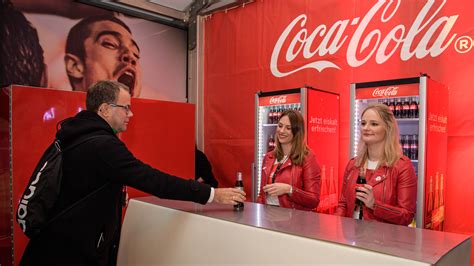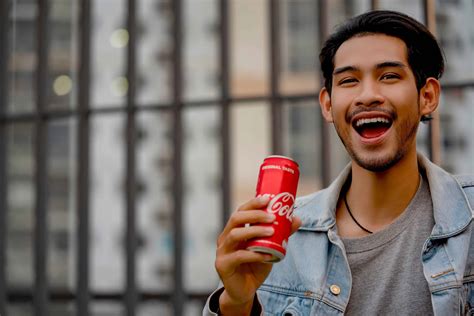
A Los Angeles protestor’s resemblance to actor Wyatt Russell has captivated social media, after a video surfaced of the individual vehemently criticizing National Guard members deployed in the city. The viral clip has sparked widespread amusement and confusion, with many users questioning whether the “Falcon and the Winter Soldier” star had unexpectedly joined the demonstration.
The protestor, captured in a video that quickly spread across platforms like X (formerly Twitter), TikTok, and Instagram, is seen confronting a line of National Guard troops. While the subject of the protest and the specific grievances voiced remain somewhat obscured by the online focus on his celebrity look-alike status, the intensity of his engagement with the soldiers is evident. The internet’s fixation on the protestor’s striking resemblance to Russell has overshadowed the underlying message of the demonstration itself, highlighting the power of visual similarity in the age of social media virality.
The emergence of the video prompted an immediate online frenzy. Social media users flooded platforms with side-by-side comparisons of the protestor and Russell, emphasizing their shared features, including their facial structure, hair color, and even mannerisms. Memes and jokes proliferated, with many speculating about Russell’s potential involvement in the protest and creating humorous scenarios based on the perceived resemblance. The incident underscores the internet’s capacity to rapidly amplify seemingly trivial occurrences and transform them into viral sensations.
Neither Wyatt Russell nor his representatives have issued any official statement regarding the doppelganger situation. The absence of comment has only fueled further speculation and amusement online, adding to the overall intrigue surrounding the incident. This lack of response is typical of celebrity encounters with viral moments that do not directly impact reputation or brand.
The video, initially circulated on X, was quickly picked up by various news outlets and online personalities, further amplifying its reach. Commentators noted the absurdity of the situation, pointing out that the focus on the protestor’s appearance detracted from any potential message the demonstration might have intended to convey. The incident serves as a case study in how media attention can be diverted by superficial factors, particularly in the context of online virality.
The underlying issue of the protest itself has become secondary to the viral sensation, underscoring a broader trend in online media consumption. The incident demonstrates the internet’s tendency to prioritize entertainment and superficial observations over substantive issues. While the protestor’s message, whatever it may be, has been largely lost in the noise, the viral phenomenon has generated a significant amount of online engagement.
The National Guard’s presence in Los Angeles, the target of the protestor’s ire, reflects ongoing concerns and social tensions within the city. While the specific reason for the deployment was not the focus of the Yahoo News report, it is essential to acknowledge the underlying context of social unrest that prompted such a response.
The incident also touches upon the growing prevalence of doppelgangers in the digital age. As social media platforms facilitate greater exposure and connectivity, instances of individuals bearing striking resemblances to one another are becoming increasingly common. These cases often generate significant online attention, reflecting a broader fascination with identity, appearance, and the potential for unexpected connections in a hyper-connected world.
Furthermore, the viral phenomenon surrounding the “Wyatt Russell” doppelganger underscores the complexities of online discourse and the challenges of maintaining focus on substantive issues. The internet’s capacity to amplify superficial elements can detract from meaningful dialogue and perpetuate a culture of distraction.
The original video of the protestor shows him actively berating the National Guard, exhibiting considerable passion in his arguments, although the exact nature of these arguments remains unspecified. The Yahoo News report highlighted the visual similarity between the protestor and Wyatt Russell, but it did not delve into the specific details of the protest itself, what organization it was aligned with, or what the protesters’ grievances were about, which serves to further emphasize the shift of focus from the message to the messenger (or, in this case, the messenger’s face).
The widespread dissemination of the video also raises questions about privacy and the potential for unintended consequences in the age of ubiquitous surveillance. While the protestor’s actions occurred in a public space, the viral spread of his image has subjected him to intense scrutiny and speculation, potentially impacting his personal and professional life. The fact that people were distracted from the issue and focusing on the protestor’s similarity to a celebrity demonstrates the power of image and the ease with which the actual message can be lost or distorted.
The incident also serves as a reminder of the challenges of verifying information and distinguishing reality from fiction in the online realm. In the initial stages of the viral phenomenon, many users genuinely believed that Wyatt Russell himself was participating in the protest, highlighting the potential for misinformation and the importance of critical thinking in the digital age. The fact that so many were willing to believe the famous actor was present speaks to how easily manipulated people can be in the age of fake news and deep fakes.
The lack of clarification from Wyatt Russell’s representatives has arguably contributed to the longevity of the viral phenomenon. Had Russell or his team immediately addressed the situation, the speculation might have subsided more quickly. However, the absence of comment has allowed the online frenzy to continue, reinforcing the notion that silence can sometimes amplify a story rather than diminish it.
In conclusion, the case of the Los Angeles protestor and his striking resemblance to Wyatt Russell offers a multifaceted commentary on social media dynamics, the power of visual similarity, the challenges of maintaining focus on substantive issues, and the complexities of privacy in the digital age. While the protestor’s message remains obscured, the viral phenomenon has provided a revealing glimpse into the inner workings of online culture and the ever-evolving relationship between reality and perception. The event highlights how easily the narrative can be swayed by superficial details, and the difficulty in maintaining focus on the core issue when faced with a compelling distraction.
The focus on superficial resemblances and the subsequent internet frenzy diverted attention from the underlying issues of the protest itself. This incident serves as a micro-example of how social media can often prioritize entertainment and sensationalism over meaningful engagement with important social or political matters. It also exposes the ease with which individuals can be misidentified or subjected to unwarranted scrutiny based solely on their physical appearance. The event’s virality also sheds light on the speed and pervasiveness with which information, accurate or not, can spread across digital platforms, underscoring the increasing need for media literacy and critical consumption of online content.
The visual similarity between the protestor and Wyatt Russell, combined with the widespread availability of camera-enabled devices and social media platforms, created a perfect storm for virality. The incident illustrates the power of visual cues in shaping perceptions and triggering emotional responses, as well as the tendency of online users to seek out patterns and connections, even when they may be tenuous or coincidental.
Ultimately, the “Wyatt Russell” doppelganger incident in Los Angeles is more than just a fleeting internet meme; it is a reflection of broader trends in online culture, media consumption, and the ever-blurring lines between reality and perception. The incident highlights how readily attention can be diverted by superficial details, and the challenges in ensuring that important social and political issues receive the attention they deserve in an increasingly noisy and distracted digital landscape.
The protestor’s actions, whatever their underlying motivation, were overshadowed by the unexpected viral sensation. The situation underscores the challenges faced by activists and organizers in ensuring that their messages are heard amidst the cacophony of online content. The incident serves as a reminder of the importance of strategic communication and the need to anticipate and mitigate potential distractions in the pursuit of social and political change.
The situation further demonstrates the complexities of online identity and the potential for individuals to be defined, rightly or wrongly, by their online presence. The protestor, who likely intended to draw attention to a specific cause or grievance, has instead become primarily known as the “Wyatt Russell doppelganger,” highlighting the potential for online narratives to overshadow individual agency and intent.
The incident also underscores the ethical considerations surrounding the sharing and dissemination of images and videos online, particularly in the context of public gatherings and protests. While the protestor was participating in a public demonstration, the viral spread of his image raises questions about privacy, consent, and the potential for unintended consequences.
Furthermore, the online reaction to the “Wyatt Russell” doppelganger incident reflects a broader cultural fascination with celebrity and the tendency to view the world through the lens of popular culture. The incident highlights the power of celebrity to shape perceptions and influence online discourse, as well as the potential for celebrity-related content to overshadow more substantive issues.
The incident also serves as a reminder of the importance of critical media literacy in the digital age. The ability to distinguish between fact and fiction, to evaluate sources of information, and to recognize potential biases and distortions is essential for navigating the complex and often overwhelming landscape of online content.
The online reaction to the incident also highlights the diverse range of perspectives and opinions that exist within the digital sphere. While some users found the situation amusing and entertaining, others expressed concern about the potential for misidentification, the invasion of privacy, and the distraction from more important issues.
Finally, the “Wyatt Russell” doppelganger incident serves as a reminder of the ever-changing nature of online culture and the importance of adapting to new trends and technologies. The incident highlights the need for individuals, organizations, and institutions to develop strategies for navigating the complexities of the digital landscape and for effectively communicating their messages in an increasingly noisy and competitive environment.
Frequently Asked Questions (FAQs):
1. Who is Wyatt Russell and why is this news focusing on him? Wyatt Russell is an American actor known for his roles in films and television series such as “Escape from L.A.”, “Everybody Wants Some!!”, “22 Jump Street,” “Overlord,” and Marvel’s “The Falcon and the Winter Soldier,” where he played John Walker / U.S. Agent. The news focuses on him because a protestor bears a striking resemblance to him, leading to widespread social media attention and speculation. The story highlights the superficial and attention-grabbing nature of viral content and how it can overshadow serious issues.
2. What was the protest in Los Angeles about? The Yahoo News article doesn’t explicitly state the subject of the protest. It mentions the protestor berating National Guard members, but the underlying cause or grievance is not specified, which emphasizes how the focus shifted from the protest’s message to the protestor’s resemblance to Wyatt Russell.
3. Has Wyatt Russell commented on the situation? As of the Yahoo News report, neither Wyatt Russell nor his representatives have issued any official statement regarding the situation. The absence of comment has further fueled speculation and amusement online.
4. Why did the National Guard deploy to Los Angeles? The Yahoo News report does not detail the specific reasons for the National Guard’s deployment in Los Angeles. However, the presence of the National Guard often indicates heightened security concerns or social unrest within the city. Further investigation would be needed to determine the exact reason for their deployment at the time of the protest.
5. Is the person in the video actually Wyatt Russell? No, it is not Wyatt Russell. The video features a protestor who bears a strong resemblance to the actor. The viral nature of the video stems from this mistaken identity and the subsequent social media frenzy it generated.
6. How did this video go viral? The video went viral due to a combination of factors: the protestor’s striking resemblance to a recognizable celebrity (Wyatt Russell), the inherent newsworthiness of public protests, and the power of social media platforms like X, TikTok, and Instagram to rapidly disseminate content. The visual similarity and the amusing nature of the perceived doppelganger effect contributed to its widespread sharing and discussion.
7. What are the potential consequences of this video going viral for the protestor? The protestor may face several potential consequences, including: unwanted public attention, potential misidentification or harassment, privacy concerns related to the widespread distribution of his image, and the overshadowing of his intended message by the viral sensation. While the initial virality may seem harmless, it can lead to real-world implications for the individual involved.
8. Does this incident have any broader implications beyond being a viral meme? Yes, the incident highlights several broader implications: the power of social media to shape perceptions, the challenges of maintaining focus on substantive issues in the digital age, the ethical considerations surrounding the sharing of images and videos online, and the potential for individuals to be defined by their online presence. It also underscores the need for critical media literacy and the ability to distinguish between fact and fiction in the online realm.
9. How does this situation reflect the current state of online media and attention spans? This situation reflects the current state of online media by demonstrating how easily superficial details can overshadow important issues. The short attention spans and the desire for entertainment value online tend to prioritize visual similarity and celebrity connections over the protest’s intended message or the underlying social issues prompting the demonstration. This incident exemplifies how online narratives can be quickly shaped and distorted by viral trends, often at the expense of deeper understanding.
10. What ethical considerations are raised by the sharing and circulation of the video? The sharing and circulation of the video raise several ethical considerations, including: the protestor’s right to privacy, the potential for misidentification and harassment, the impact of the video on his personal and professional life, and the responsibility of media outlets and social media users to verify information and avoid perpetuating misinformation. Even though the protestor was in a public space, the viral spread of his image without his consent raises questions about the boundaries of public discourse and the potential for harm.
11. How does the lack of response from Wyatt Russell’s representatives affect the narrative surrounding the video? The lack of response from Wyatt Russell’s representatives has arguably fueled the narrative surrounding the video. In the absence of official confirmation or denial, speculation and amusement have continued to thrive online. A statement from Russell or his team could have clarified the situation and potentially diminished the viral phenomenon, but the silence has allowed the story to perpetuate and evolve.
12. What does this incident say about the power of visual similarity in the digital age? This incident underscores the power of visual similarity in the digital age. The protestor’s striking resemblance to Wyatt Russell was the primary catalyst for the video’s virality. Visual cues and perceived connections can quickly capture attention and trigger emotional responses, leading to widespread sharing and discussion. This highlights how easily individuals can be misidentified or subjected to scrutiny based solely on their physical appearance in an increasingly image-driven online environment.
13. In what ways could this viral moment be used to actually highlight the issues the protest was about? Although the initial viral sensation overshadowed the protest’s message, there are ways to leverage the attention to highlight the underlying issues. Activists and organizers could use the viral video as a starting point to raise awareness about the protest’s cause, share information about the grievances being addressed, and encourage engagement with the relevant social or political issues. By reframing the narrative and directing attention back to the substance of the protest, it’s possible to turn a superficial moment into an opportunity for meaningful dialogue and action.
14. How does the spread of the video reflect broader trends in online content consumption? The spread of the video reflects several broader trends in online content consumption, including: the preference for easily digestible and visually appealing content, the tendency to prioritize entertainment and sensationalism over substantive issues, the short attention spans and the desire for instant gratification, and the reliance on social media platforms for news and information. The incident illustrates how online content consumption is often driven by superficial factors and emotional responses rather than critical thinking and informed engagement.
15. What responsibility do social media platforms have in managing viral content like this? Social media platforms have a significant responsibility in managing viral content like this. They should strive to: ensure the accuracy of information being shared, prevent the spread of misinformation and harmful content, protect the privacy of individuals featured in viral videos, and provide users with tools to report and flag content that violates community guidelines. Social media platforms should also be transparent about their algorithms and content moderation policies, and they should work to promote media literacy and critical thinking among their users.









